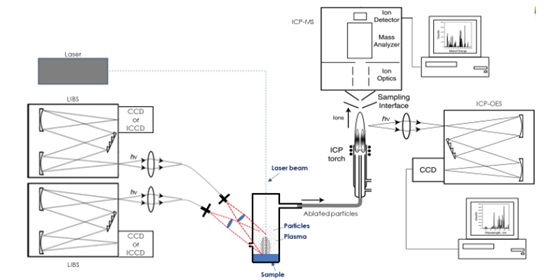Congratulating Dr. R.E. Russo on receiving Colloquium Spectroscopicum Internationale (CSI) XLII award
Applied Spectra, Inc. is pleased announce that Dr. R.E. Russo, Executive Chairman and Founder of Applied Spectra, is receiving CSI XLII Award during the conference (May 30th to June 3rd) held at Gijón Convention Centre (Palacio de Congresos de Gijón), Gijon, Spain. This award has been presented to Dr. Russo in recognition of his outstanding scientific contribution towards understanding laser material interactions and enabling related applications and for his achievements in technological transfer from academia to industry.

At CSI XLII conference, in a special session, Dr. Russo will provide a plenary lecture titled “Laser Ablation Research & Development: 60 Years Strong” on June 3rd (9:15 to 10:00 AM Spain time zone). The abstract of this plenary lecture is presented below.
Please join us in congratulating Dr. Russo on receiving this award.
CSI XLII Award Plenary Lecture
Title: Laser Ablation Research & Development: 60 Years Strong
- Speaker: Dr. R.E. Russo
- Room: Columnas Rm, Gijón Convention Centre
- Date /Time: June 3rd, 9:15 to 10:00 AM

Abstract
A miniature explosion is created when a focused laser beam energy exceeds the dielectric breakdown of a material, a process known as laser ablation. Laser ablation science began around the same time as the invention of the laser in the early 1960’s. Since that time, the international scientific community has investigated fundamental mechanisms to understand and control this intriguing transient physics and chemistry phenomenon – which has become a comprehensive field of study. Fundamentals studies are imperative, and they still are addressed as there are no first-principle models to describe the ablation process or predict performance for an application. Empirical R&D is predominant as the goal is to achieve reproducible behavior – the backbone for applications. Applications can be to process the ablated material itself, like surface texturing, drilling, medical, nano-particle formation, pulsed laser deposition, modeling of nuclear events, plasma emission spectroscopy, and many others. The benefits of this technology for chemical analysis are significant for many R&D and industrial measurements including energy (battery, solar), environmental, medical, materials, food safety, nuclear nonproliferation and essentially every aspect of society where chemistry is important in defining a material.
Spectroscopy serves a dual purpose in laser ablation R&D, optical emission measurements provide fundamental knowledge of the plasma (temperature, electron number density, shockwaves, etc,) and the luminous optical plasma spectroscopically represents the elemental and isotopic content of the sample. The process is referred to as laser induced breakdown spectroscopy (LIBS). The atomic and ionic emission wavelengths represent the samples’ elemental content and their concentrations. LAMIS (Laser Ablation Molecular Isotopic Spectroscopy) measures isotopes from the molecular emission band spectra in the LIBS plasma. And, as is well known, laser ablation produces a dry aerosol of the sampled material that is transported to a secondary excitation source (ICP for example). This presentation will provide an overview of the accomplishments in laser plasma R&D, fundamental behavior, several unique applications, the simultaneous measurement of LIBS with LA-ICP-MS, and the ability to measure isotope ratios in field-based instruments. Early (1970’s) instrumentation was developed but could not meet the needs of industrial requirements; not because of the technology itself, but because lasers, spectrometers (optical and mass), and computers also were just being developed, and were unreliable. The components have been advanced (always more to come) to the point that sensitive, accurate and precise laser plasma spectrochemical analysis is becoming mainstay. Companies now commercializing instruments for spectrochemical analysis are seeing increased demand for products as the world awakens to the use of this 21st century technology.

Tandem LA – LIBS Instrumentation Concept by Applied Spectra (LIBS, LA-ICP-MS and LAMIS on one Instrument Platform)

